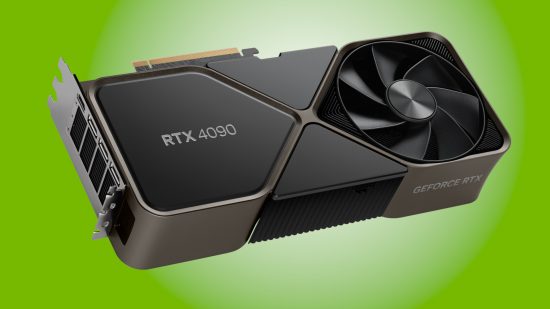The RTX 4000 GPU reveal impressed me for all the obvious reasons, including the promised performance ceiling of the RTX 4090, but I’m most excited by the technologies that come part and parcel with Lovelace – namely DLSS 3.0 and Nvidia Reflex. The latter in particular is something I’ve grown to greatly appreciate, and the prospect of it being more widely supported in games is something that every GeForce owner should celebrate.
For those unfamiliar with Nvidia Reflex, it’s a platform developed by team green that aims to reduce your system’s latency (otherwise described as input lag). Without getting too wrapped up in its technicalities, Reflex does this by optimising the way your CPU and graphics card work together to render frames, improving your system’s responsiveness with no noticeable downside.
Nvidia Reflex plays an integral role in Nvidia DLSS Frame Generation, which promises to boost fps higher than previous versions of the upscaling technology. However, this only really matters if you’re lucky and wealthy enough to be upgrading to an RTX 4080 or higher, but its prevalence brings consequential benefits to owners of older GeForce cards (particularly those on the lower end of the scale).

You see, developers will need to support Nvidia Reflex if they want to implement Nvidia DLSS 3.0. This means that you’ll be able to reduce the input lag of your system in more games, regardless of whether you have team green’s best graphics card or are still rocking a GTX 900 series pixel pusher.
This is naturally something that greatly benefits esports gamers, but I’ve personally found that Nvidia Reflex offers plenty of value in single-player experiences. As someone whose competitive skills and reactions are slowly but surely falling out of their prime, I’ll take any advantage I can get against my opponents (be they human or AI).
Regardless of whether I’m dropping into a game of Call of Duty: Warzone or dodging my way through a throng of draugr in God of War, I certainly feel more confident in my abilities with Nvidia Reflex enabled. I value its inclusion like I do the response time of my gaming monitor, optimising my setup to remove all possible obstructions that I can.
So, yes, while I’m obviously excited to see how well the RTX 4000 series performs, I’m pleasantly surprised at the prospect of more Nvidia Reflex adoption via DLSS 3.0. Here’s hoping team green has the heart to make the SDK open source, so we can enjoy the benefits of the tech on Intel Arc and AMD Radeon graphics cards.
